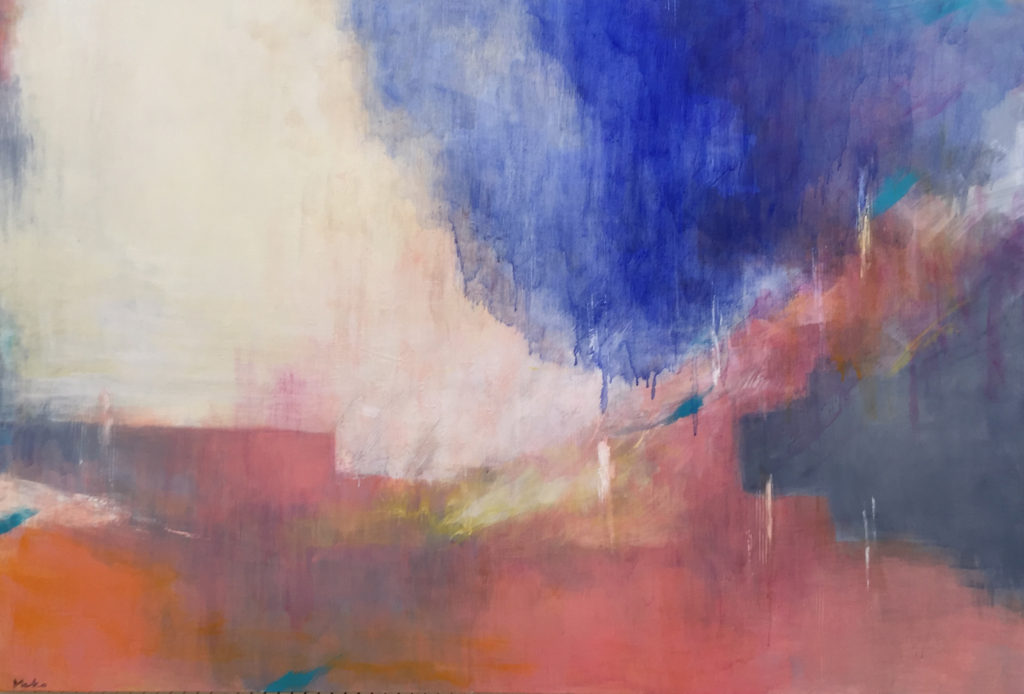“The color of memory”
Paul Zimmerman in conversation with Mariko Teradoko
Paul Zimmerman: How did you develop interest in art?
Mariko Teradoko: I have loved drawing since I was a child, and I used to take painting classes. The first exhibition I saw was the Paul Klee exhibition, and I vividly remember that I was impressed by the wonderful colors and composition though I didn’t quite understand them. After that, in junior high school, I met wonderful teachers to motivate myself to draw.
PZ: Have you always been an abstract artist?
MT: In order to take the entrance examination for art college, I studied plaster drawing, still life, croquis, etc. at an art research institute. I have been drawing the human body, still objects, and landscapes since I entered art college,
but my interests turned to abstract painting. I’m especially influenced by abstract expressionism in the 1950s and 1960s. After graduating from college, I have only painted abstract works.
PZ: Where do you find the inspiration for your paintings?
MT: The idea comes from the original scenery. Mountains, rivers, seas, skies, vegetation, towns, and the people and families who I have come across there. Everything I have experienced can be an idea, and is important to me.

PZ: What is the most challenging aspect of your work?
MT: When the feelings and the work do not match. Especially when I feel getting lost, it becomes difficult to settle. So I try not to get lost these days.
In reality, I work in small atelier with some storage space for works. I think Japanese artists generally have trouble with large space. (Due to general shortage of land in Japan.)
PZ: What is your artistic process? How do you create your works?
MT: The first idea is to paint on paper and look for what is visible from there. Then I would establish my feelings and memories on it. Since the canvas work is in oil painting, I try to bring the work closer to what I feel
by repeating the process in drawing after drying.
PZ: How do you select titles for your paintings?
MT: Since the theme is the color of memory, I don’t name the artwork very concretely. I try to name it with universality, such as “Memory Fragment” for small pieces and “Memory of (some color)” for large works, but sometimes I name it with concrete title.
PZ: How do you know when the painting is finished?
MT: I feel like the work tells me it that it is good enough.
PZ: What is art for you?
MT: Living, living a life, and important things that are indispensable. I experienced parting with a loved one and art helped me to live at that time. Mr. Tetsuo Mizu, a painter I admire, taught me that “Art can change even a person’s life.”
I think that art has such madness and also has a kindness that wraps around people.
PZ: What are you working on now?
MT: I am producing a series of 5 pieces of vertically long 227 x 112cm work.
PZ: How does the pandemic influence your work and sensibility?
MT: Every day I used to create new work, and it remains the same. But as I work I express condolences for the deceased and gratitude to the medical staff. When I couldn’t paint I felt at a loss. But I felt that I was given time to think about different things, unlike the days when I had created the artwork as if being chased by something for a long time.
